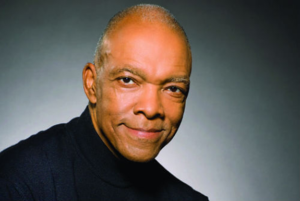Dropping the Icon: Tom Burrell
The story of the other Marlboro Man

Tom Burrell is rightly a truly famous advertising executive. His story is that of someone who went from the mailroom to chairman of his own very successful agency. He was “the first Black person to work in a Chicago advertising agency.”
He started working in the mailroom of Wade Advertising in 1961 and when the situation presented itself, he pitched some ideas to the creative director and got a position as a junior copywriter.
Burrell’s first accounts were Robin Hood All-Purpose Flour and Alka-Seltzer, and he recalls, “I had no contact with the client. It was radical enough for a Black person to be working in an agency. Presenting that person to a client was another three or four steps ahead.”
He does not hold that against the agency; “I was extremely fortunate to be working in a milieu of really positive people. I never had any racial issues with a hundred and some-odd people who were working at that agency, which I think was very unusual.”

Over the next ten years, he worked at Leo Burnett Company, Foote Cone and Belding and Needham Harper & Steers.
Then in 1971, he and his friend Emmett McBain founded their own agency, Burrell McBain. In 1974 he bought McBain out and renamed the agency, Burrell Communications Group.
It was at Burrell McBain he created what is, perhaps, his most famous campaign, the Black Marlboro Man.
In 1970 Philip Morris wanted to spread the reach of Marlboro cigarettes to the African American community. The face of the brand was The Marlboro Man, and the prevailing understanding of the time was that to appeal to a Black audience all you needed to do was to take the white people in an ad and replace them with Black people.
And that was what Philip Morris tried. Morris’ ads featured cowboys, complete with horses, lassos, and Stetsons just instead of being white, they were Black.
The ads were a failure.
Philip Morris decided to turn to Burrell who had a revolutionary philosophy for the time. He summed it up quite simply: “Black people are not dark-skinned white people.”
What he did was to look past the cowboy and identified the essence that the white Marlboro epitomised: he was independent, assured and utterly cool.
So, Burrell dropped the cowboy and replaced him with a young cosmopolitan Black man, woven into the fabric of the Black community and its culture. He was an authentic and far more relatable figure for the Black audience to whom Marlboro wanted to appeal.
Looking back on the original approach Morris took, Burrell was characteristically succinct in his view of the original approach. In 2015 he said to NPR, “The last thing I want to do is go back a hundred years with a bunch of rural, cowboy white guys—doesn’t sound too safe”.
Burrell went on and developed campaigns for other iconic brands, including McDonald’s and Coca-Cola. He retired in 2004 but remains chairman emeritus of Burrell Communications. In a 2018 interview, he recalled that “We got rid of the cowboy and we had the coolest guys that we could come up with going through their daily activities, smoking. That was huge.”
His impact on advertising was immense and continues to this day. NPR reporter Sonali Gibson, who interviewed Tom Burrell in 2015, says, “I feel like what Burrell did open the door for the kind of ethnic micro-targeting that we see today. […] When you see an ad that seems like it was made especially for you, you’re probably right. And we have Tom Burrell to thank for it.”
The effects of his work and words can still be felt today. he showed how diverse talent can brings real value companies. Creative thinking and innovative strategies can only go so far when everyone in the room looks the same, thinks the same or comes from the same background. Through his boldness, the world learnt how we create better campaigns and brand strategies to truly connect with the diverse world we’re all trying to reach